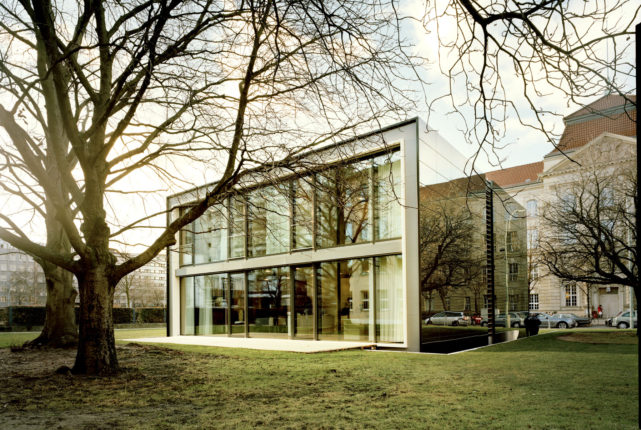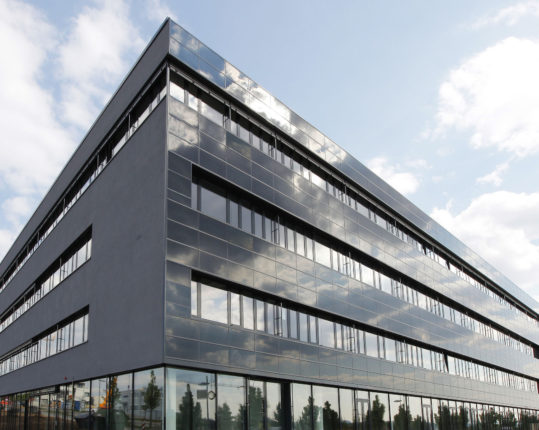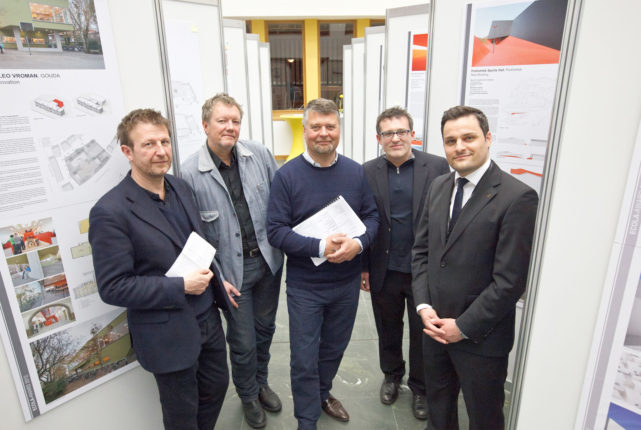 A two-leaf all-glass door for maximum transparency and flush-closing doors with hidden hinges are the aesthetically pleasing new fire protection products that Teckentrup presented for the first time at BAU.
A two-leaf all-glass door for maximum transparency and flush-closing doors with hidden hinges are the aesthetically pleasing new fire protection products that Teckentrup presented for the first time at BAU.
Mehr…
Author: Online-Redaktion
Form and function
Should the appearance of an insulated facade reflect its function? Those involved in the research project on EWIS modulation say ‘yes’! At BAU 2013, the World’s Leading Trade Fair for Architecture, Materials, Systems, in Munich, they will present an entirely new approach to the design of facade insulation.
Energy-plus building in Berlin
A building that produces more energy than it consumes: the Efficiency House Plus shows that it is possible to build detached houses that can function as miniature power stations. Power is supplied by the photovoltaic modules that are installed not only on the roof but also on the facade (StoVentec ARTline Invisible).
Solid as a rock
With mineral wool as its base and reinforced with basalt fibres, the new StoTherm Classic S1 facade insulation system is non-combustible and can even be used above high-rise level. It is resistant to an impact of more than 100 joules and its mineral wool insulation of up to 34 cm, which has general building inspectorate approval, makes it suitable even for passive houses and buildings with very low energy requirements.
The facade power station
Integrated photovoltaic modules convert ventilated rainscreen cladding facades into high-yield power sources. StoVentec ARTline combines the latest standards in insulation and active energy generation in two system options featuring sophisticated designs: non-visible and rail-fixing.
Decoupled
The innovative sub-construction of the StoVentec ventilated rainscreen cladding facade system (RSC) has been categorised as “thermal-bridge-free” by the Darmstadt Passive House Institute. With a U-value of 0.01 W/m²K, it meets all of the requirements of a passive house construction.
Switchable solar control glass: Light Transmission improved
At glasstec 2012 in Düsseldorf, Germany, EControl-Glas (Plauen, Germany) introduced with ECONTROL 55/12 their new generation of switchable solar control glazing. The major novelty: Daylight transmission when switching the electrochromic glass to a light shade has been noticeably increased.
The winners are revealed
The winners of the ECOLA Award 2012 were announced in Berlin on 27 April, 2012. The award, which is dedicated to the use of plaster and render in architecture, pays tribute to the architectural achievements seen in both new and old buildings, each of these supplemented by a CO2–optimised construction category. Chaired by Jørgen Bach from the Aarhus-based architectural office Arkitema Architects, the five-person judging committee awarded four first prizes and a special commendation. 140 projects from 13 countries were nominated for the competition.
Energetically modernized with “sunglasses”
The “House of Architects” in Stuttgart is a forum for building culture and the headquarters of the Chamber of Architects of Baden-Württemberg. The glazed foyer has just been completely modernized. Some pane edges had become leaky and the glass had become fogged by condensation between the panes. The glazing was also far below current energetic standards. The sun blinds, which were on the inside, required constant maintenance and blocked the view. The complex requirements for the modernization were to lower the heating and cooling costs, improve the lighting, and provide a clear, glare-free view, unobstructed by shading.









